How to Write a Research Proposal That Gets Noticed

Getting your research proposal approved feels like shouting into the void – frustrating and seemingly pointless! Too many graduate students spend months crafting proposals that end up in professors' rejection piles within minutes.
The harsh reality?
Most academic proposals fail because they're boring, unfocused, or missing key elements that reviewers want to see. Your brilliant research idea means nothing if you can't present it properly.
That's why we've broken down the proposal writing process into actionable steps that actually get results. We've analyzed what earns funding approval and what doesn't, focusing on structure, persuasive techniques, and avoiding common mistakes.
Ready to create a research proposal that stands out? Use our exclusive code SCI30 for 30% off SciSpace to streamline your academic writing process today.
What Exactly is a Research Proposal?
Think of a research proposal as the master plan for your project. It’s a formal document that clearly explains what you plan to research, why it's important, and exactly how you're going to do it.
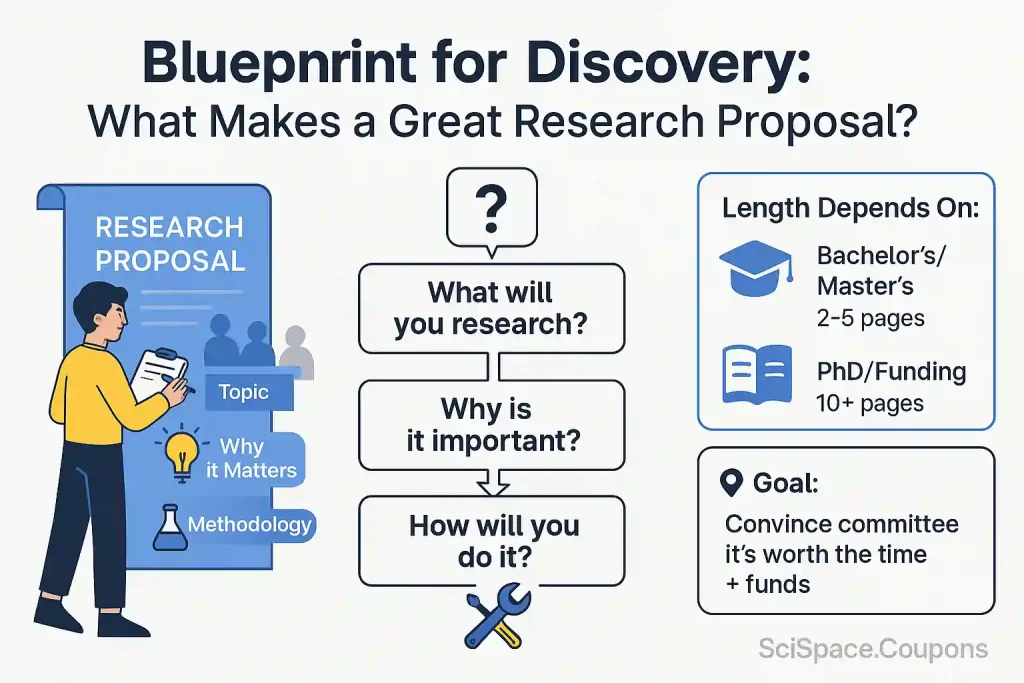
The main goal is to convince others—be it a professor, a university committee, or a funding body—that your project is valuable, credible, and worth their time and money.
While the format can change depending on your field, most proposals share a common structure designed to answer three core questions:
The length can also vary. For a bachelor's or master's thesis, you might only need a few pages. But for a PhD dissertation or a major funding application, your proposal could stretch to dozens of pages, packed with detail.
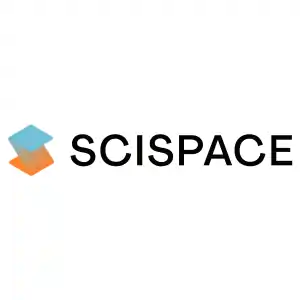
Turn Plan into Polished Draft
exclusive
Focus on your research while SciSpace fine-tunes the formatting—apply code SCI30 for 30% off any annual plan.
SAVE UP TO 30%
The Key Parts of a Research Proposal That Gets Noticed
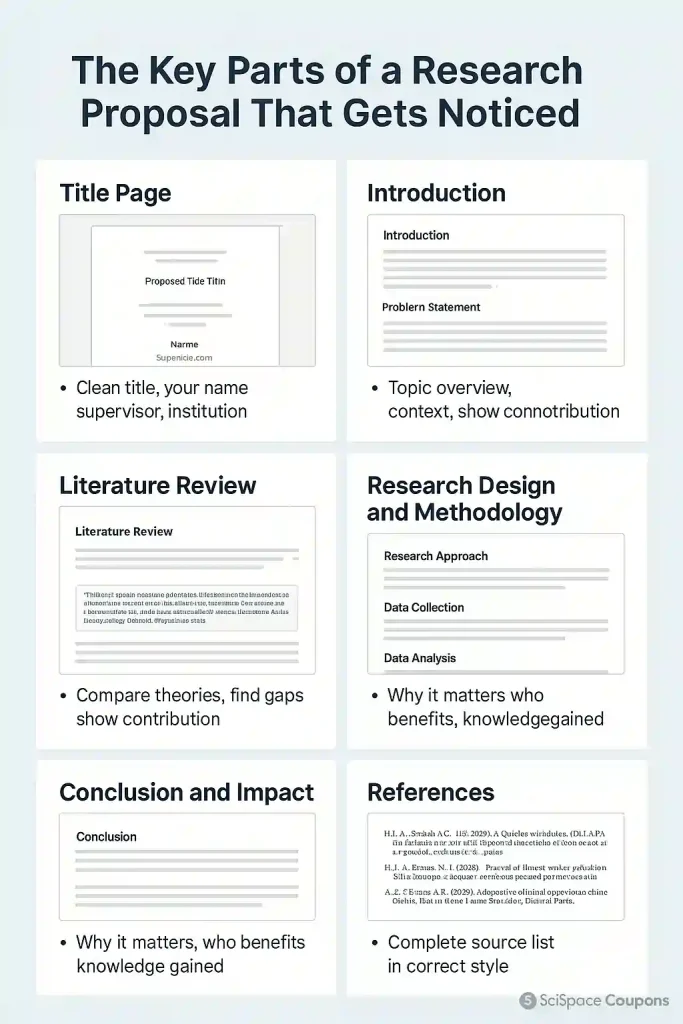
A well-structured proposal is easy to follow and shows you’ve thought everything through. Like a good SEO proposal, it clearly communicates your plan and priorities. Here are the essential sections you need to include.
1. Title Page
This is the first thing your reader sees. Keep it clean and professional. It should include:
2. Introduction
This is your hook. It's your initial pitch to get the reader invested in your idea. Your introduction must succinctly explain what you want to do and why it matters.
It should cover:
To make it compelling, think about who would be interested in this topic (like scientists or policymakers), what is already known, what is missing from current knowledge, and what new insights your research will bring to the table.
3. Literature Review
you understand the key research in your field. It proves your project is built on a solid foundation of existing knowledge and isn't just repeating what's already been done.
Here, you need to:
Think of it as identifying a gap in the current research and positioning your project as the perfect piece to fill it.
4. Research Design and Methodology
This is the practical “how-to” part of your proposal. Here, you lay out your plan of action. You need to describe in detail the methods you'll use to collect and analyse your data.
You should specify:
Being clear and specific here shows your reader that your project is well-planned and achievable.
5. Conclusion and Expected Impact
Wrap up your proposal by summarising why your research is important. Briefly restate your project's main goal and emphasize the potential impact. What new knowledge will it contribute? Who will benefit from your findings? This is your final chance to leave a lasting impression.
6. Reference List
Finally, include a complete list of all the sources you cited in your proposal. Use a consistent citation style (like APA, MLA, or Chicago) as required by your institution.
From Concept to Approval: Mastering Research Proposals with SciSpace
Now that you know the components, let's check out the writing process into manageable steps.
Step 1:
Pick a Specific and Interesting Topic With SciSpace:
Start by choosing a topic that hasn't been fully explored using SciSpace's vast research database to identify gaps in current literature. The platform's AI-powered search helps you find niche angles and emerging trends that make your proposal stand out from the crowd.
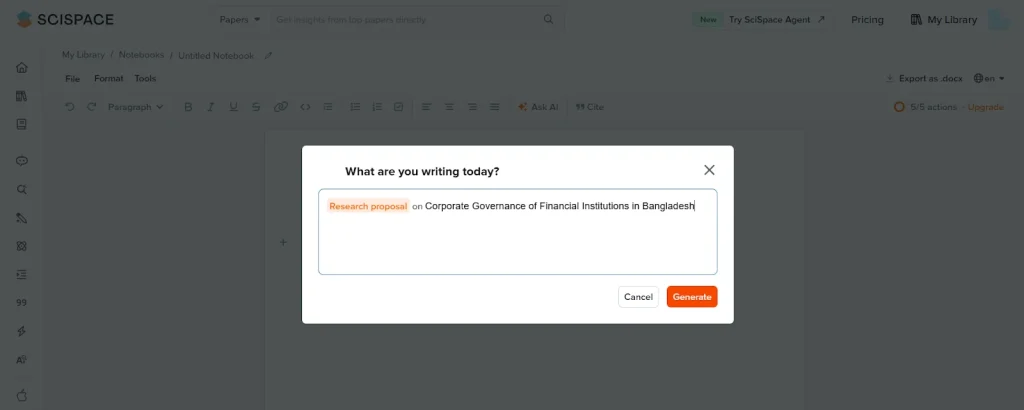
Step 2:
Start with a Literature Review:
This is a critical early step. Before you can propose new research, you must understand what's already out there. Your goal is to find patterns, ongoing debates, and, most importantly, gaps in the existing research.
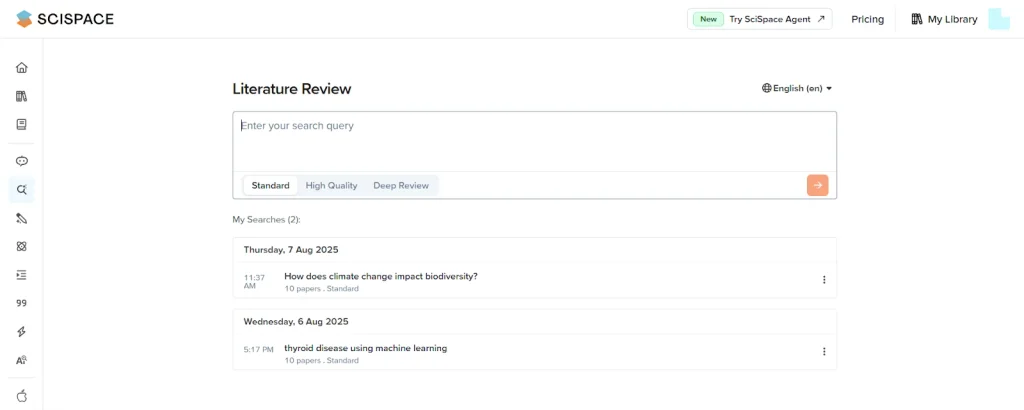
This is where a tool like SciSpace becomes a researcher's best friend. With access to over 270 million papers, you can quickly find relevant literature. Its AI Copilot can help you understand complex articles, summarise key points, and identify those crucial gaps you need to build your project around.
Step 3:
Develop a Clear Research Question or Hypothesis:
Your entire project hinges on this. Your research question should be focused, specific, and answerable within the scope of your project. It guides your methodology and keeps your research on track.
Step 4:
Outline Your Methodology:
Plan out exactly how you'll answer your research question. Justify why you've chosen specific methods. For instance, if you're conducting interviews, explain why this is a better choice than a survey for your particular topic.
Step 5:
Define Your Scope and Limitations:

No research project can answer everything. Be realistic about what you can achieve. Clearly define the boundaries of your study. Acknowledging potential limitations—like a small sample size or a limited geographical focus—doesn't weaken your proposal. Instead, it shows you're a thoughtful and critical researcher.
Step 6:
Plan Your Timeline and Budget:
Create a realistic schedule for your project from start to finish. Break it down into key stages, like literature review, data collection, analysis, and writing. If your proposal is for funding, you'll also need a detailed budget that outlines all expected costs.
Step 7:
Write, Edit, and Get Feedback:
Start writing your proposal, following the structure we've outlined. Once you have a draft, step away for a day or two before editing. Better yet, ask a supervisor, colleague, or mentor to review it. Fresh eyes can spot mistakes and areas that need clarification.
Speed Up Your Success with SciSpace
Tired of the endless struggle with formatting, finding papers, and managing citations? SciSpace is an AI-powered platform designed to make research faster and smarter.
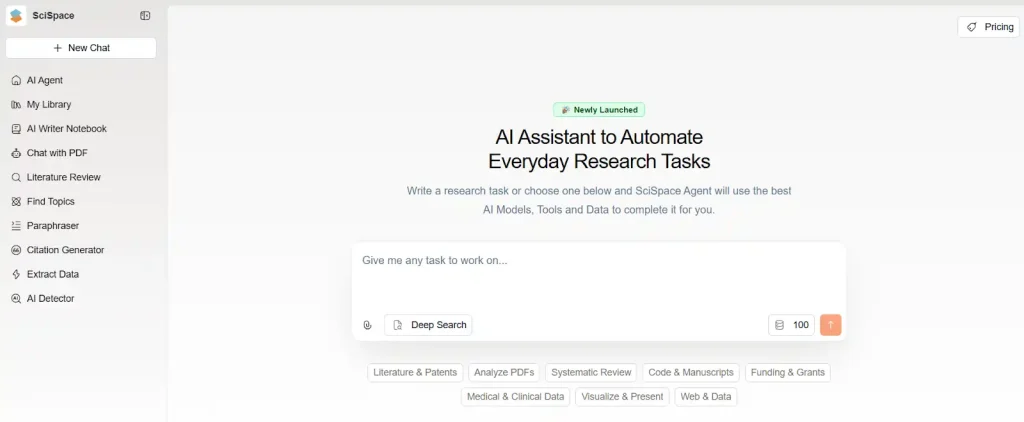
Here’s how it can transform your proposal writing process:
Writing a research proposal doesn't have to be a painful process. With SciSpace, you can focus on your ideas, not the grunt work.
And the best part? You can get started with a huge discount. Use our exclusive coupon code SCI30 to get 30% OFF any annual SciSpace plan.
Final Thoughts
A winning research proposal is your ticket to turning a great idea into a real project. It needs to be clear, convincing, well-structured, and persuasive. By following this guide and using our template, you're already on the path to success.
Don't let the process bog you down. Tools like SciSpace are here to help you work smarter, saving you countless hours on literature reviews, writing, and formatting.
Stop fighting with citations and start focusing on what truly matters: your research.Ready to create a proposal that gets you noticed? Claim your exclusive 30% discount on SciSpace with the code SCI30 and take the first step toward academic success today.



